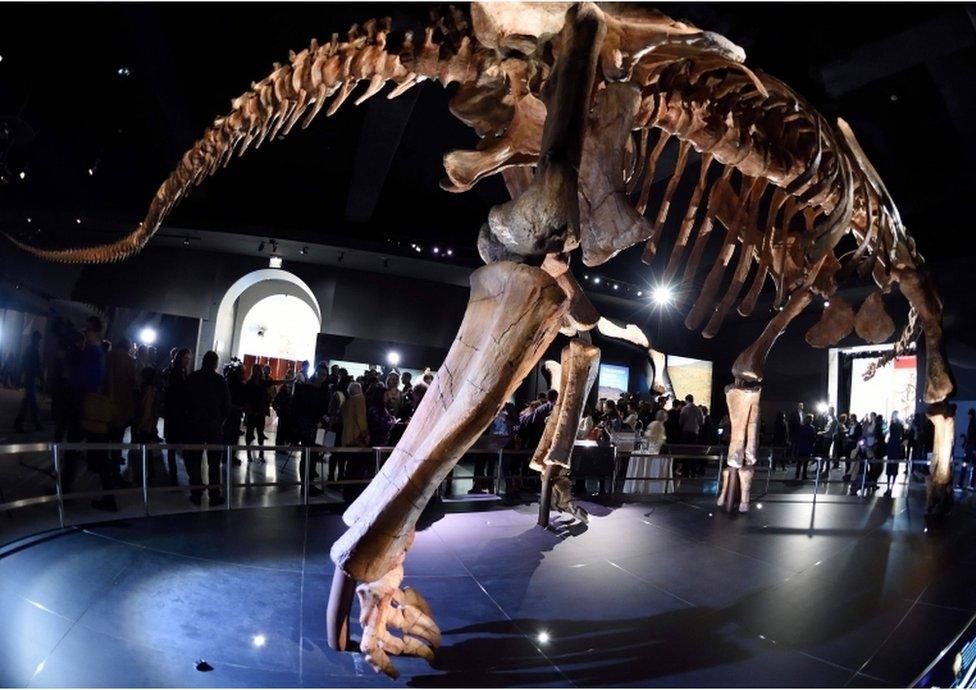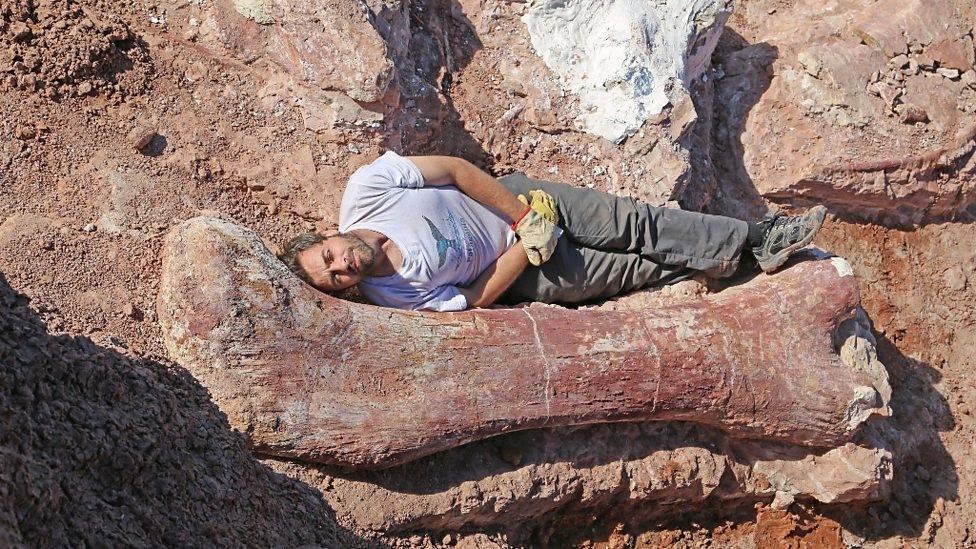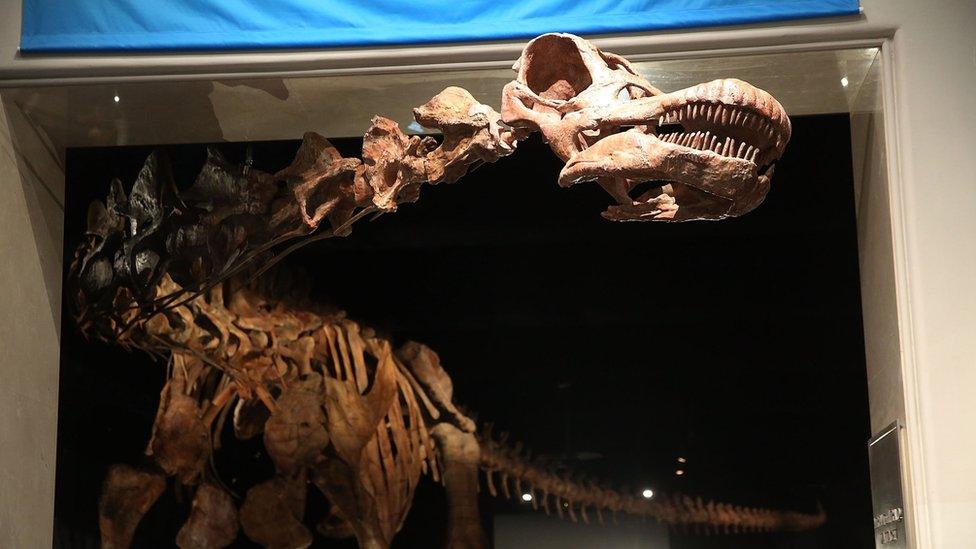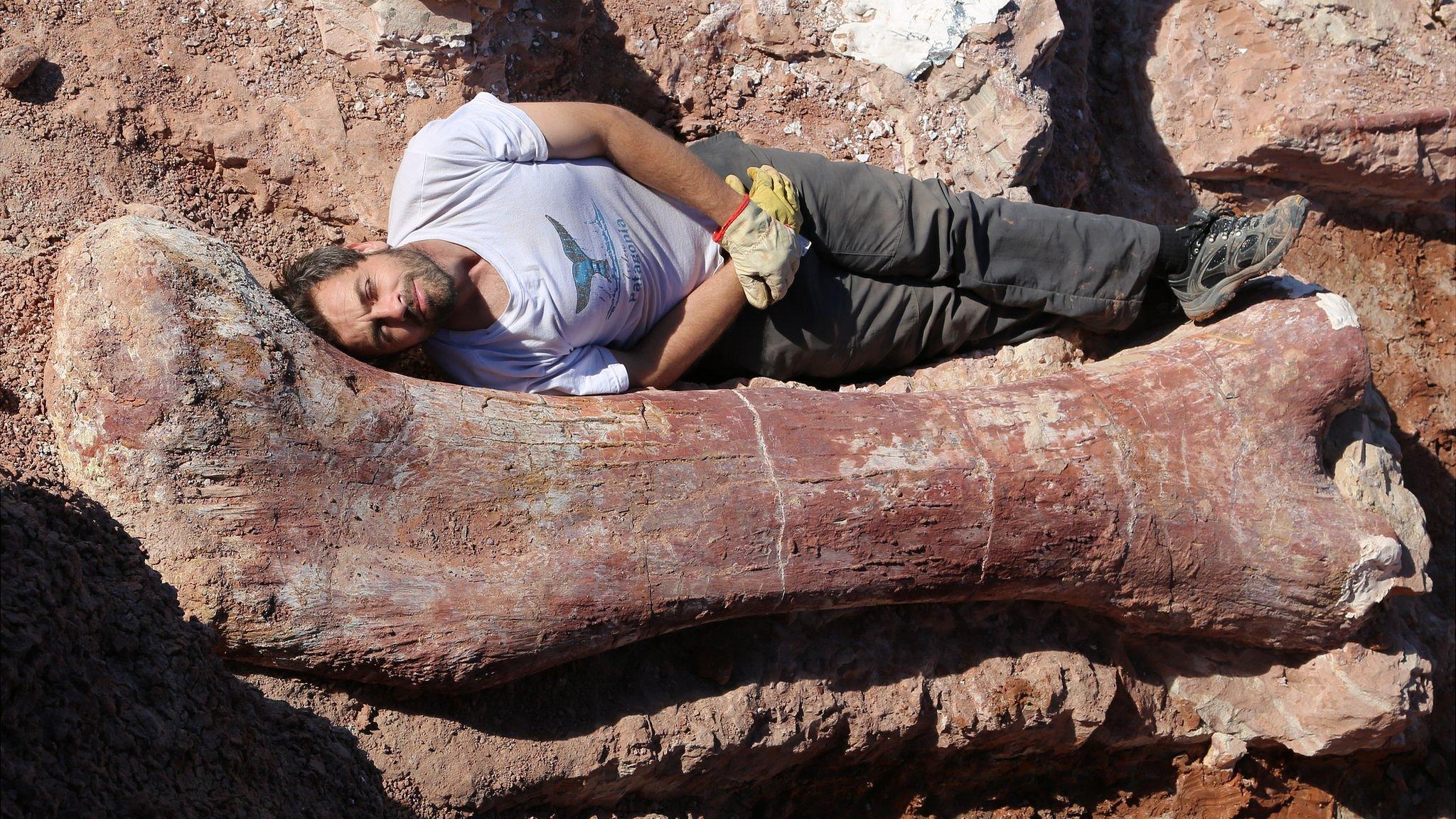Giant dinosaur slims down... a bit
- Published

A cast went on display at the American Museum of Natural History in New York
So, it wasn’t quite as big as they first thought, but the dimensions of the colossal dinosaur unearthed in Argentina in 2014 still take your breath away.
Its fossil bones suggested at the time the animal - this week named Patagotitan mayorum - could have tipped the scales at 77 tonnes.
Further investigation by scientists now put its likely bulk at 69 tonnes.
However, that still makes it one of biggest dinosaurs ever discovered.
A team from the Museum of Palaeontology Egidio Feruglio, led by Dr Jose Luis Carballido and Dr Diego Pol, reports its interpretation of the bones in the latest edition of the Royal Society journal Proceedings B, external.
The group had followed up the chance discovery in 2013 by a local farm worker of a bone protruding from desert rock near La Flecha, about 250km west of Trelew in Patagonia.
The excavation, filmed by the BBC for a David Attenborough documentary, eventually produced hundreds of bones belonging to at least six individuals.
Sir David Attenborough: "Nature doesn't produce more than it needs so if it could carry [a certain weight] it almost certainly did"
A cast of the largest skeleton was put on display in the American Museum of Natural History in New York, US, last year.
This animal was more than 37m in length. It was a sauropod - one of those long-necked, long-tailed, plant-eating dinosaurs like the famous Diplodocus creature.
The beast would have lived in Patagonia when it was lush and covered by forest, between 100 and 95 million years ago.
Even though the researchers have now scaled back their assessment of its dimensions, Patagotitan could still be the all-time record-holder.
It is possible another mighty titanosaur called Argentinasaurus was just as big. The difficulty in knowing for sure is that far fewer bones of Argentinasaurus have been collected and studied.
This makes estimating its true size a lot more uncertain.

Dr Diego Pol lies next to a Patagotitan femur
- Published21 January 2016

- Published17 May 2014
